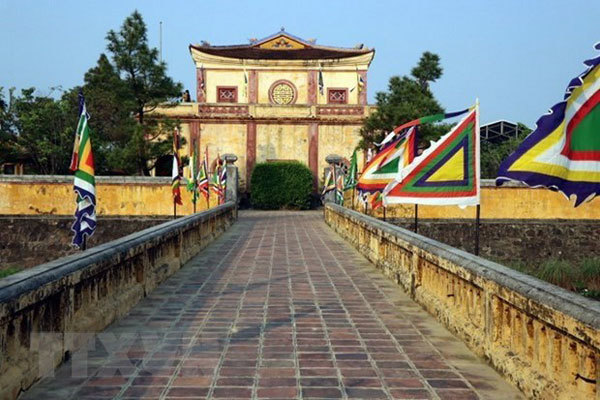 |
| Tang Tho Lau in the Complex of Hue Monuments, Thua Thien-Hue Province. (Photo: VNA) |
Tang Tho Lau, built in 1825 under the reign of King Minh Mang (1791 – 1841), is a two-storey building located on a rectangular islet at the centre of Hoc Hai Lake.
It is divided into small spaces with many windows, and this scientific design is meant to serve the function of storing and conserving books and important papers of the court.
The Hue Monuments Conservation Centre said Tang Tho Lau used to suffer from serious degradation due to ups and downs in history while archives kept here had been displaced, even to other countries.
After Tang Tho Lau was put under the centre’s management, its restoration has been carried out since 2014, and the site is currently storing a large number of documents, videos, and images.
Director of the conservation centre Vo Le Nhat expressed his hope that in the time ahead, Tang Tho Lau will not only be a place for keeping archives or studying cultural heritage but also become a unique attraction for both researchers and tourists.
The Complex of Hue Monuments was recognised as a world cultural heritage site by UNESCO in 1993.
Apart from this complex, Hue City, which was the imperial capital of Vietnam during the Nguyen Dynasty, is also home to four others in the world heritage lists, namely “Nha nhac” or Vietnamese court music (Intangible Cultural Heritage of Humanity); the woodblocks of the Nguyen Dynasty (part of the Memory of the World Programme); the imperial archives of the Nguyen Dynasty (part of the Memory of the World Programme); and the Literature on Hue Royal Architecture (part of Documentary Heritage in the Memory of the World Programme).
VNA

The unparalleled antique ‘warehouse’ in Hue City
Mr. Hoang at a very young age was driven by a strong sense of destiny to seek old values manifested in antiques, particularly attire from Vietnam’s last feudal dynasty – the Nguyen Dynasty.